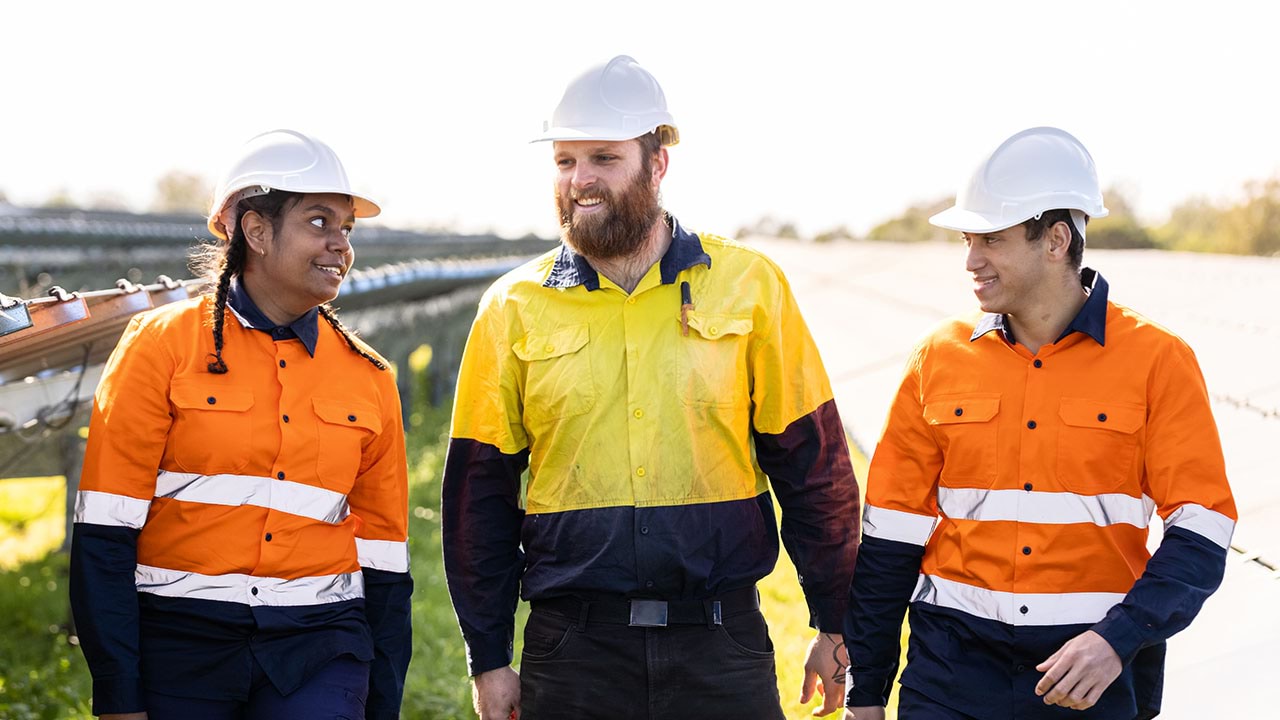The administrative and support services industry is diverse. There are office jobs and also outdoor-based jobs that require physical labour.
Almost all businesses need some administrative and support services, and skills are very transferable, so this industry is perfect if you’re looking for opportunity and flexibility.
What people love about working in administrative and support services
Some of the benefits of working in administrative and support services are:
- Excellent prospects for a range of roles in the industry.
- Many jobs allow you to work independently. You can develop your own workflow, systems and processes that help you excel.
- As an administrator, you interact with every aspect of the business. This gives you well-rounded experience and the opportunity to learn new skills on the job.
- There are opportunities to learn on the job and try the work before choosing it as a career.
- The work is flexible so you can tailor your workload to suit your needs. There are opportunities for part-time, casual, full-time and shift work.
Where you can work
The administrative and support services industry has a wide range of employers. For example, you could work for a private business, a call centre or health care provider.
The kinds of administrative and support service industry settings you could work in include:
- offices
- call centres
- events facilities and function centres
- public spaces and gardens
- hospitals and healthcare providers
- hospitality and accommodation providers
- homes and gardens.
Median salary
The median weekly earnings for people who work in the administrative and support services industry in Australia is $1,578.
Source: Jobs and Skills Australia(opens in a new window)
Note that this salary is current as of January 2025 and is indicative only. A range of salaries apply to different roles across the industry.
Job demand in Victoria
Below are the employment projections for the administrative and support services industry in Victoria. Figures show the number of workers in 2024 and the new workers expected to enter the workforce by 2027 and 2034.
‘New workers expected’ accounts for workers adding new jobs to the economy and replacing retirees over the next 3 and 10 years. These forecasts are estimates only. There will be additional jobs available as people move between jobs and industries.
| Region | Workers 2024 | New workers expected by 2027 | New workers expected by 2034 |
|---|---|---|---|
| Victoria | 112,442 | 10,134 | 43,003 |
| Melbourne – inner metropolitan | 28,018 | 2,490 | 9,933 |
| Melbourne – inner south-east metropolitan | 7,107 | 483 | 2,162 |
| Melbourne – southern metropolitan | 15,680 | 1,218 | 5,821 |
| Melbourne – northern metropolitan | 12,499 | 1,242 | 5,756 |
| Melbourne – eastern metropolitan | 14,732 | 1,025 | 5,024 |
| Melbourne – western metropolitan | 11,915 | 1,402 | 6,092 |
| Ballarat and surrounds (Central Highlands) | 2,441 | 259 | 912 |
| Bendigo, Echuca and surrounds (Loddon Campaspe) | 3,271 | 362 | 1,229 |
| Geelong, Colac and surrounds (Barwon) | 4,980 | 636 | 2,172 |
| Gippsland | 3,849 | 373 | 1,393 |
| Horsham and surrounds (Wimmera Southern Mallee) | 633 | 37 | 177 |
| Mildura, Swan Hill and surrounds (Mallee) | 1,908 | 111 | 550 |
| Shepparton, Seymour and surrounds (Goulburn) | 1,802 | 176 | 606 |
| Wangaratta, Wodonga and surrounds (Ovens Murray) | 2,163 | 210 | 713 |
| Warrnambool, Hamilton and surrounds (Great South Coast) | 1,444 | 110 | 464 |
Career success stories

Rebecca opens doors with a business traineeship
“The trainers at TAFE were really supportive and able to teach in a way that suited my needs. I recommend the traineeship pathway to people with disabilities because we learn best by doing things.”

Shaping lives: Sean and Jaike help people find their career pathways
“I love being able to help people to get a job or into a course. Seeing someone come through our doors and being able to take them from one place in their life to the next is a great feeling.”
Resources to plan your next steps
Visit our administrative and support services industry profile to find out about:
- what it’s like to work in administrative and support services, and some of the jobs you could do
- training and skills to work in the industry, and financial assistance to help pay for your course
- help getting a job in administrative and support services, and industry job projections for Victoria
- other free resources and advice to plan your training and career.
Explore growing industries in your region
Updated



